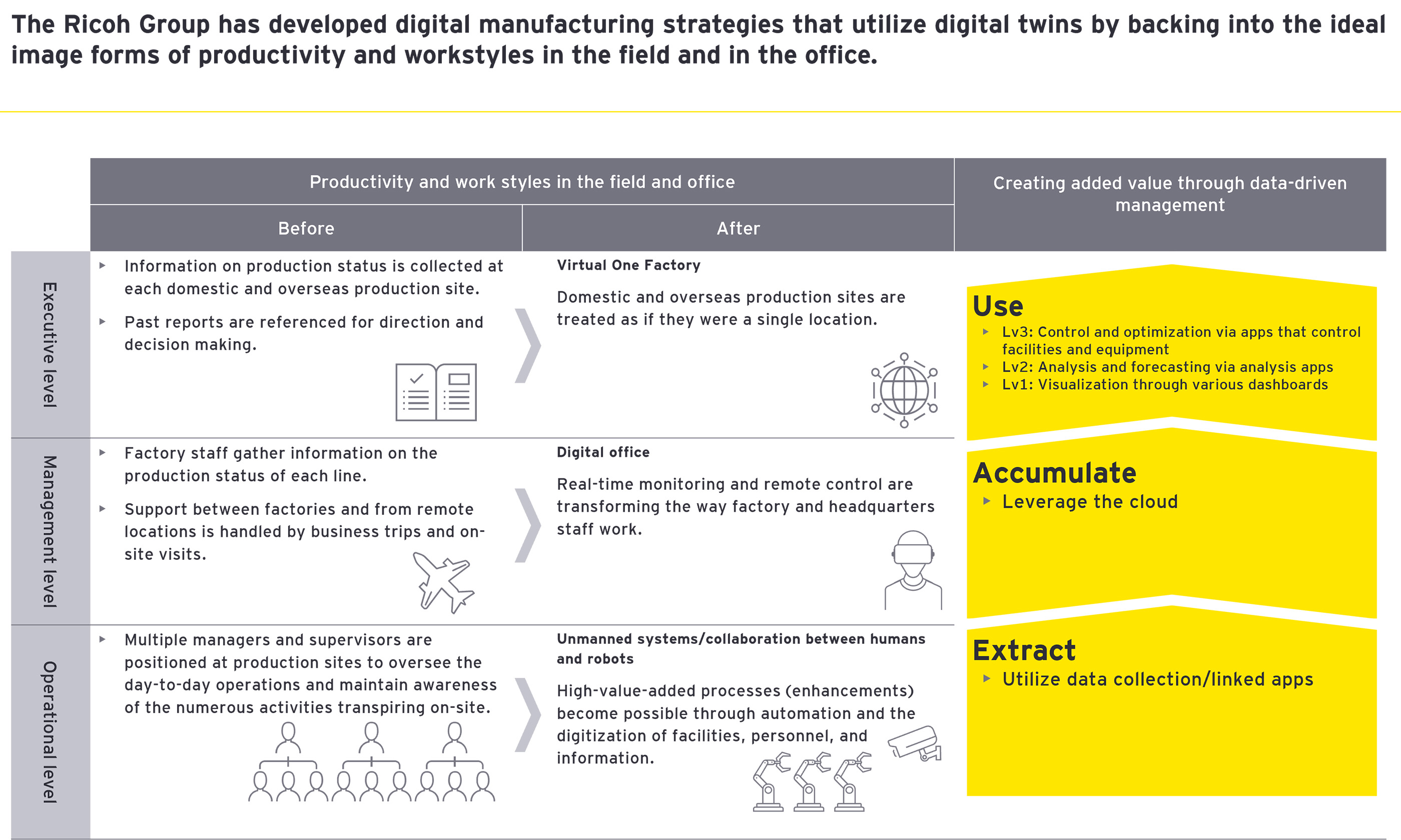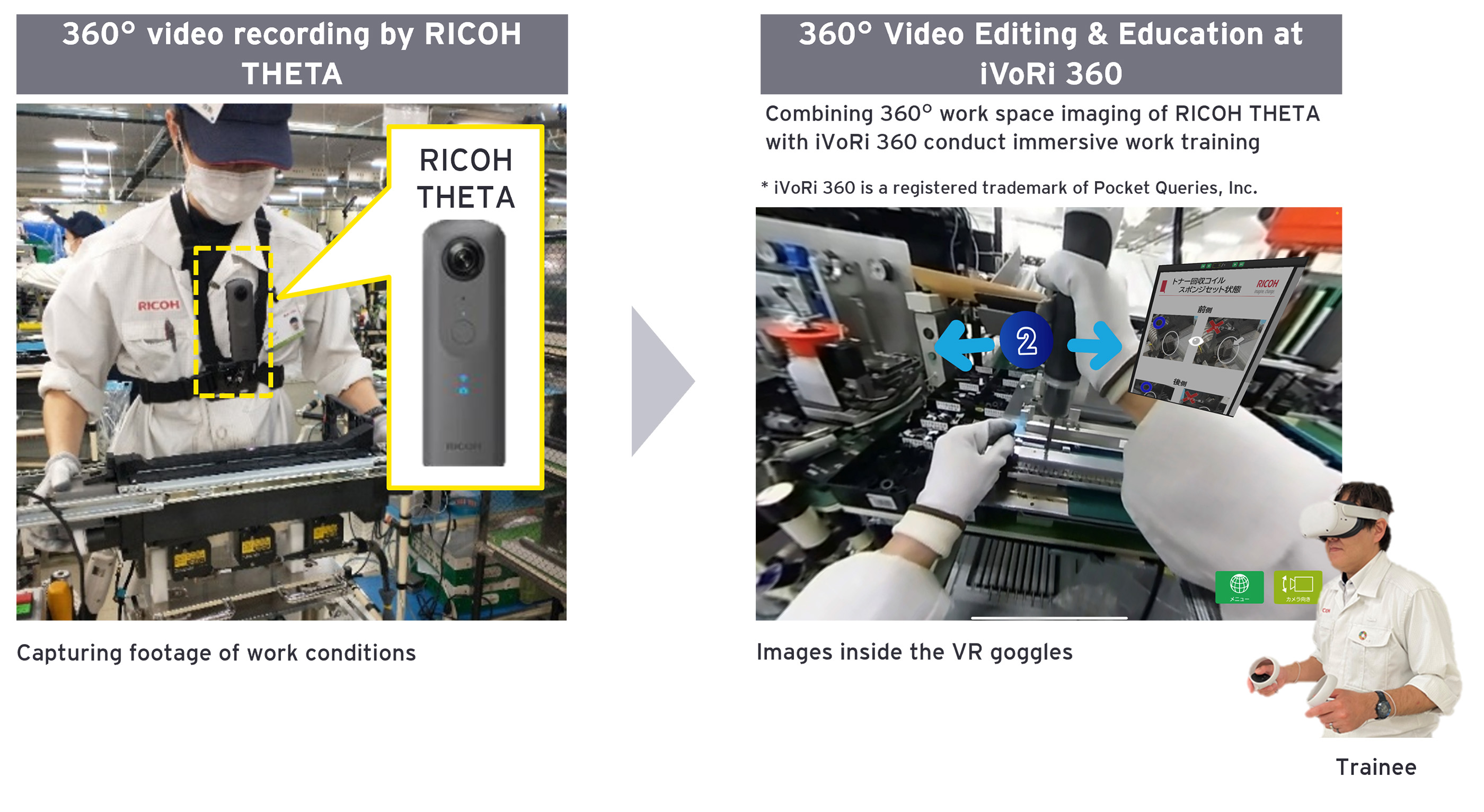In relation to digital manufacturing Mr. Naoki Okuyama from Ricoh's Digital Strategy Department commented that "We found the answer on the factory floor, where our typical production sites of the future will be classified in two broad categories, either 'automation' or 'human-robot collaboration.' If we take the example of mass production, such as smartphone manufacturing in China, this lends itself to automation and 'unmanned' operations which are more efficient from an investment perspective. On the other hand, Ricoh's production in Japan involves multi-variety, small-run production, which requires flexibility in production processes. However, production equipment that offers this degree of flexibility is neither easy to operate nor maintain, and the ROI is not always met. At domestic production sites, the need for production flexibility continues to justify the presence of human workers, but there are parallel concerns about human error and the issues of a declining birthrate and aging population. This is why we are creating a more worker-friendly production environment by utilizing collaborative robots."
Data infrastructure:
Digital twins function in conjunction with real-time data, which drives the creation of a framework for data collection, processing, storage and security. Data is collected from physical devices, processed using sensors and AI, and then organized and converted into useful information. Data is cleaned and preprocessed when necessary to ensure its integrity. The process uses structured and unstructured data, and governance structures are in place for data maintenance, access control and security measures. Collectively, these actions build practical and reliable digital twins, enabling diverse simulations and analyses. Mr. Taiki Saito, Group Leader at Ricoh Industries Co., Ltd.’s Printer Production Division, made the following statement: "When digitizing human-related data, it is crucial to collect data in a natural way without making people feel that their data is being taken. It is essential to gather information without disrupting the normal workflow of individuals." This represents an important approach to seamlessly integrating data collection within the natural actions and behaviors of people.
Technical skills and training:
The implementation of digital twins relies heavily on personnel with specialized knowledge and technical skills, which may include expertise in data analysis, modeling, programming, and other specific technologies. Appropriate training and continuous education therefore acquire greater importance in order to maximize the potential of employees. Ricoh Industry Co., Ltd. has undertaken a unique initiative for employee training which involves not just capturing the movements of workers but also scanning the entire workspace and recreating it virtually to visualize and simplify its understanding of the entire process. This enables employees to do more than merely memorizing work procedures: they can now understand the situation on the ground, which fosters an ability to optimize their work. Utilizing VR goggles, as seen in the images below, they are able to present an expert’s point of view in their training materials which has led to observable improvements in work efficiency. Employees can now have a virtual presence at the site in a realistic, immersive audio-visual experience. In this way, employees gain a more intuitive understanding of the advanced skills, procedures, and work environment for skilled workers, leading to an uptick in the speed to acquire new skills and, consequently, to the overall efficiency of the work process."






